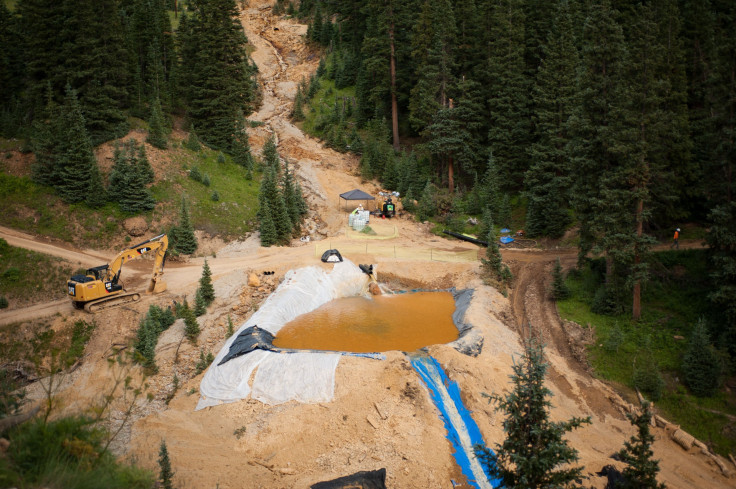EPA Knew Dangers Of Blowing Up Toxic Colorado Gold Mine, Did It Anyway: Report

The Environmental Protection Agency was aware that remains of a gold mine in Silverton, Colorado, could produce a toxic “blowout" this month, according to official documents obtained by the Associated Press.
An attempted cleanup of the Gold King Mine in July inadvertently released 3 million gallons of contaminated water into the Animas river, loading it with traces of heavy metals and sediment. On Friday, the EPA handed over documents that "shed a little more light on what officials knew leading up to the botched cleanup," the AP reported.
The accident is currently under multiple department investigations:
A 71-page safety plan for the site included only a few lines describing what to do if there was a spill: Locate the source and stop the flow, begin containment and recovery of the spilled materials and alert downstream drinking water systems as needed.
Colorado Attorney General Cynthia Coffman said after reviewing the documents that she remained frustrated with the EPA's lack of answers.
"The plan indicates there was an understanding of what might happen and what the potential consequences were. We don't know whether they followed the plan," Coffman told The Associated Press. "I want to give the EPA the benefit of the doubt here. I really want to do that. It's getting harder."
The contamination spread 300 miles "through Colorado, New Mexico and Utah, to Lake Powell on the Arizona-Utah border," the wire service reported. To handle the aftermath, the agency has tried to manage the damage with "containment pods" that soak up the toxic elements before they reach other parts of the river.
Earlier this month Colorado funneled $500,000 to assist in the cleanup via the state's Disaster Emergency Fund. Colorado Gov. John Hickenlooper declared a disaster emergency.
Agencies estimate it could take years -- even decades -- before mines like Gold King can be safely shuttered.
© Copyright IBTimes 2024. All rights reserved.






















